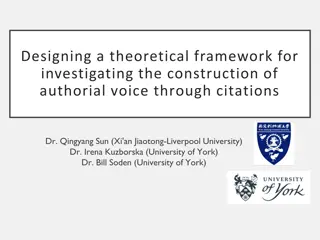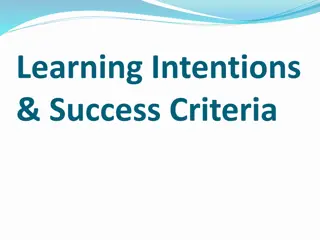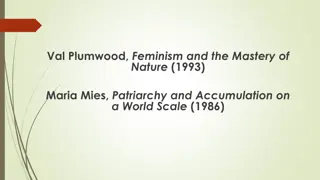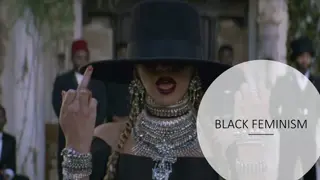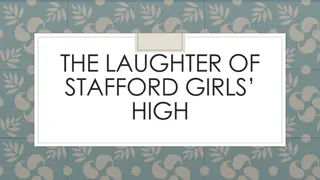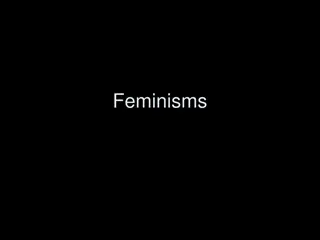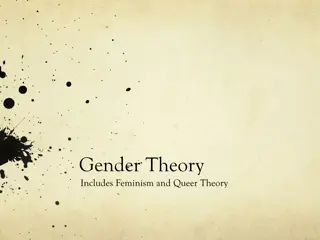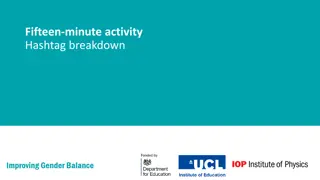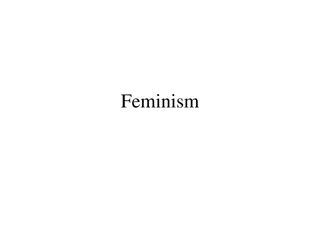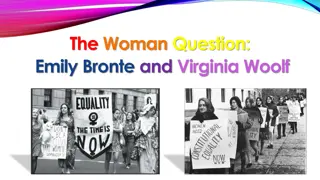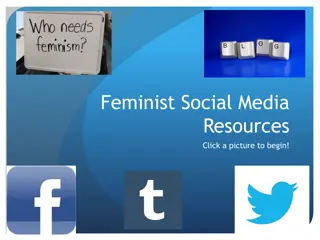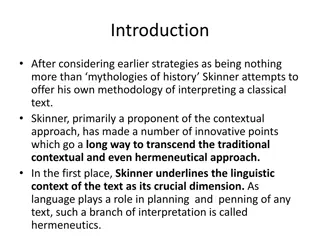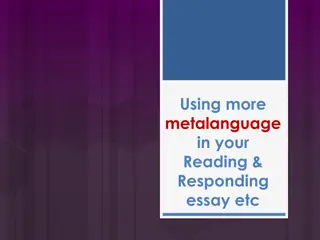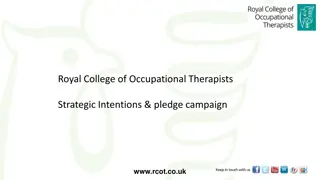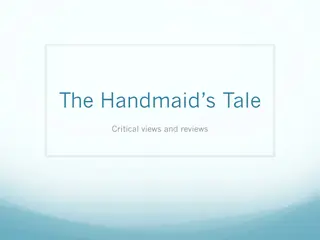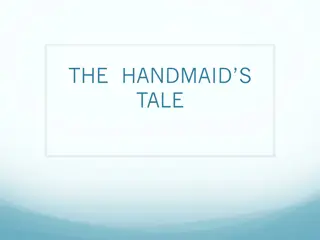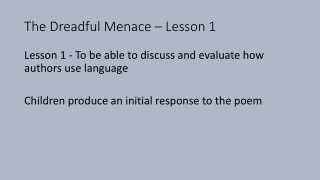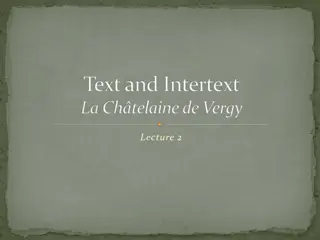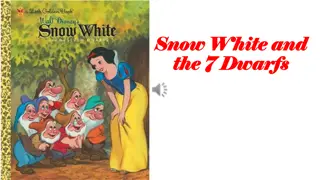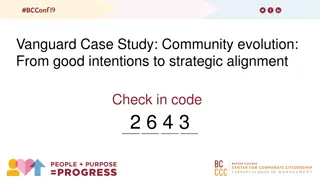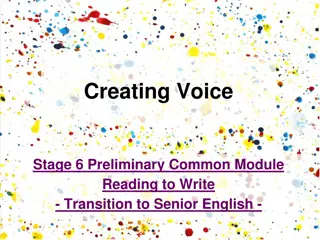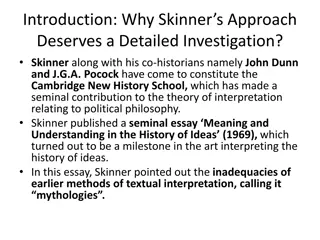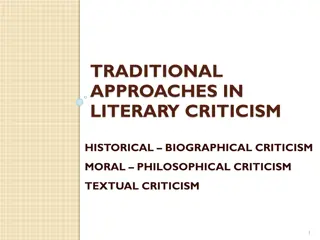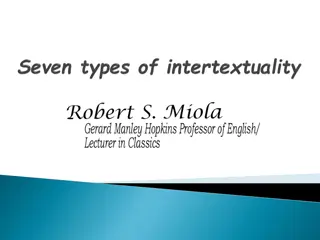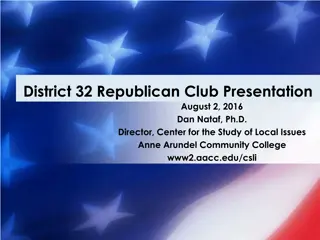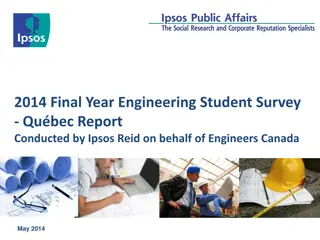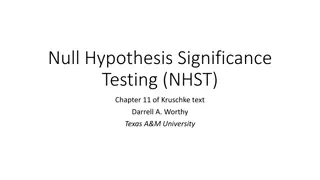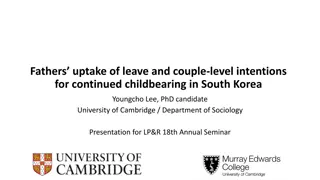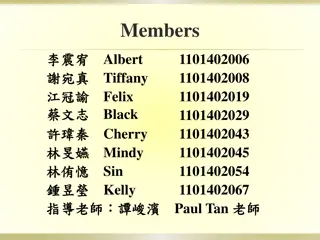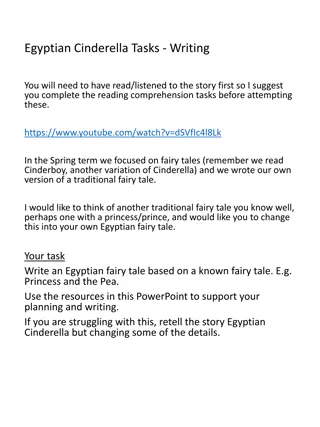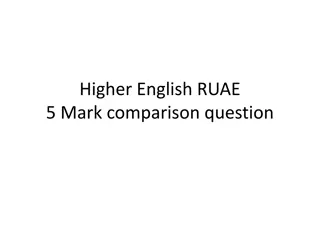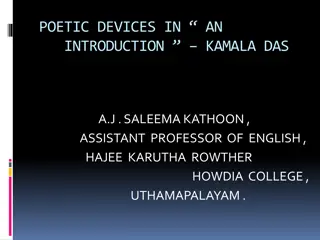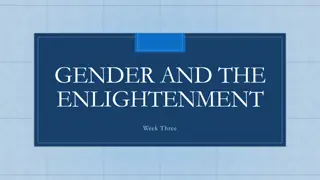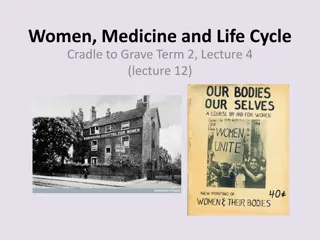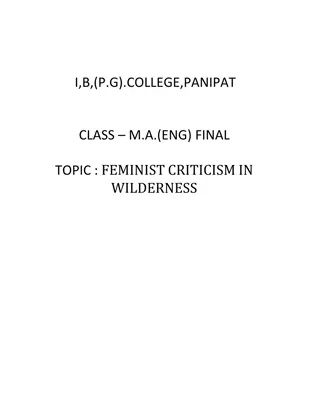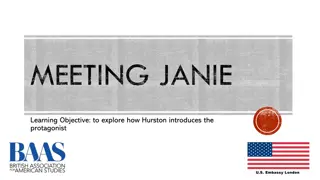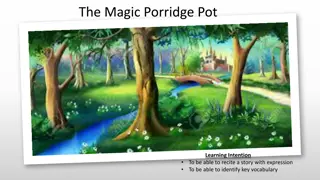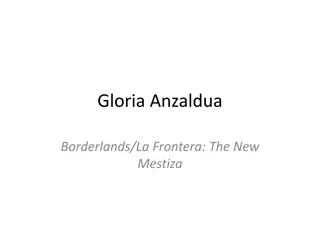Feminism in "The Handmaid's Tale": Exploring Authorial Intentions
Despite Margaret Atwood's denial of writing "The Handmaid's Tale" as a feminist piece, the novel inherently explores feminist themes through the portrayal of women's oppression and control in a dystopian society. The text delves into the objectification of women, their limited autonomy, and the suppression of their voices, highlighting the intricacies of gender dynamics and societal power structures.
Download Presentation

Please find below an Image/Link to download the presentation.
The content on the website is provided AS IS for your information and personal use only. It may not be sold, licensed, or shared on other websites without obtaining consent from the author. Download presentation by click this link. If you encounter any issues during the download, it is possible that the publisher has removed the file from their server.
E N D
Presentation Transcript
HANDMAIDS TALE AUTHORS INTENTION MAIRI MADILL
FEMINIST TEXT OR IS IT? Once we determine an author s intention for communicating in a text, we are more prepared to evaluate the contents of their message. Discuss this idea by making reference to The Handmaid s Tale. We are studying this text as a feminist piece. However, do you think this was Atwood s intention? Discuss why/why not you think this.
NOT FEMINIST! Atwood has been quoted multiple times as not writing the Handmaid s Tale to be feminist. It is stated that she was interested in totalitarian system which women as margins become the victim of their society .While the book does focus on the marginalisation of women, there are several instances where women themselves are oppressive and regressive. The aim of this dystopian fiction is to admonish the reader and make them think about all the catastrophes in their society .Knowing this, the at first glance feminist piece of literature, is more critical of women than you would think.
FEMINISM IN THE HANDMAIDS TALE Despite the Atwood not intending the main objective of the novel to be feminist, there are definitely many ideas in the novel that coincide with the ideas of feminism. The fact that this dystopian society focuses on the marginalisation of women, there is countless examples of their oppression. For example, in the red centre, the controlling Aunts are seen to be very powerful. However, as the quote; guns were for guards shows, even the most powerful women in this society were still not as powerful as the men. These Aunts are frightening to the handmaid s, however, despite their intimidating nature and brainwashing, they are still not as frightening as the armed guards outside the centre. There is also the idea in the novel that women s bodies are the only thing that matter in this society. Not their personalities or their minds, just their bodies. Something could be exchanged, we thought, some deal made, some trade-off, we still had our bodies . The women are very aware of this, and some use it to try and get ahead. Gilead does not value women as people, but seems them purely as vessels of reproduction.
FEMINISM IN HANDMAIDS TALE CONTINUED to keep us from seeing but also from being seen. The white wings around the Handmaid s heads are a symbol of their oppression as women. Religious imagery, covering hair/face to be modest (like nuns). White to symbolise the innocence these women are meant to have. Obstructing their view to symbolise how they are meant to blindly follow the oppressive regime, and not look around or question anything. The religious imagery and ideas of modesty are ironic as handmaid s are essentially sex workers. Milk and Honey Religious imagery. Refers to the biblical description of Irael s wonderful fertility. The fact that the name of this shop is only a picture, because it is illegal for women to read. This shop shows Gilead s main interest as a society; suppressing women and religion. The fact that in Gilead it is illegal for women to read has many feminist connotations. It highlights the extent of the women of Gilead s oppression, as when they read words that haven t been taken out of a propaganda video, all the women are terrified, The women around me breathe in, there s a stirring in the room . These women not being allowed to read is similar to our world, where there are many girls who don t receive any education. Reading and literature is a way of improving your brain, which is exactly what the Gilead society does not want women doing. This is also why it is so much more dangerous for Offred and the Commander to play scrabble than any sex act, because this allows her to be more than a sexual object. Discuss any other examples of feminist ideology found within the Handmaid s Tale with your group.
CRITICISM OF WOMEN Despite all the feminist ideology in the novel, there is a lot of criticism of both women and feminism. For example, there is a lot of women on women hatred in the novel. While this is something Gilead tries to push, with the Aunt s telling the Handmaid s that the Commander s Wives will hate them and that they should sympathise with them, it is still a prevalent feature that a lot of the women do not like each other. This is seen early on in the novel; it s the red dress that she disapproves of, and what it stands for . The fact that Offred is essentially a mistress causes those such as Rita, who hangs onto thoughts and ideas of the previous society where adultery was seen as a sin, to dislike her purely because of her job. The fact that Rita s lingering views from the previous society is a criticism of our own society. Offred is very critical of the female Japanese tourists that she sees when shopping with Ofglen. Then I think: I used to dress like that This hypocrisy of Offred disproving of a woman dressing the way she used to dress is a criticism of women, essentially saying that women hold judgments of other women in their hearts the same way men do. There is also large amounts of criticism of women in the way Offred views and treats Janine. For example, at the Red Centre when Janine talks about her experience of being gang raped, the women couldn t be less supportive or understanding; your fault, your fault, your fault, we chant in unison . This shows a complete lack of female bond, and suggests that Atwood feels women can be just as harsh and uncaring in their judgments as men. It s also similar to the victim blaming that occurs in our own society.
CRITICISM OF FEMINISM Atwood s depiction of radical feminism in the novel suggests that she does agree with it. Good riddance to bad rubbish The radical feminists that Offred remembers from her past actually displayed similar attitudes to the new Gileaden society, as they burned pornographic magazines and books. Thus, censoring sexuality and destroying reading materials in the same way Gilead do. Shows that the rebellion isn t perfect or blameless, explains why Offred isn t fully committed to rebellion or to being a model member of society, and is also a criticism of radical feminism. She feels it is just as oppressive as the Gilead society is. Discuss any further criticisms of radical feminists/women found in the novel.
CONCLUSION Personally, I feel like the discovery that Atwood did not intend the Handmaid s Tale to be feminist forces you to revaluate the novel and it s core ideas. At first, the novel seems to be very pro-women and merely details a society where women are oppressed by men, however further analysis reveals that the novel is more critical of women and radical feminism than you would first think.


